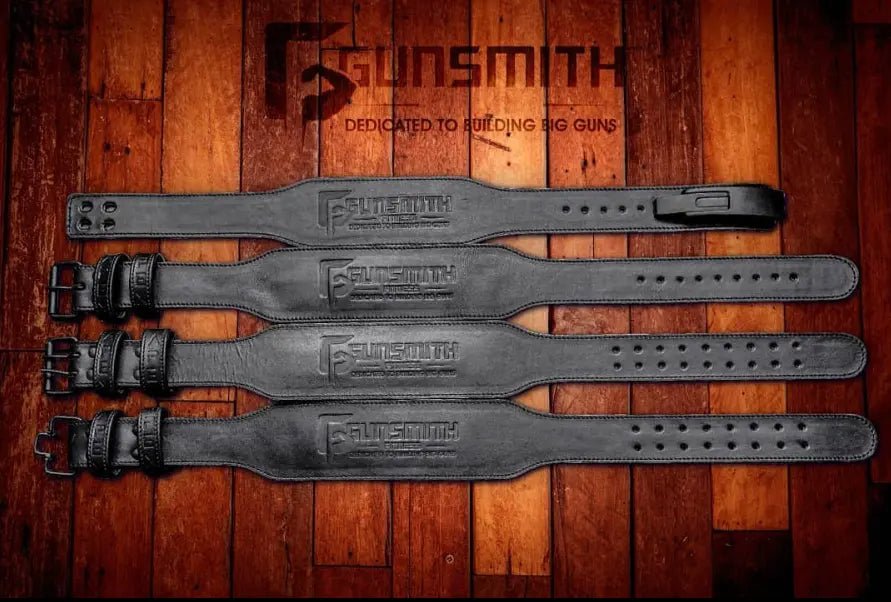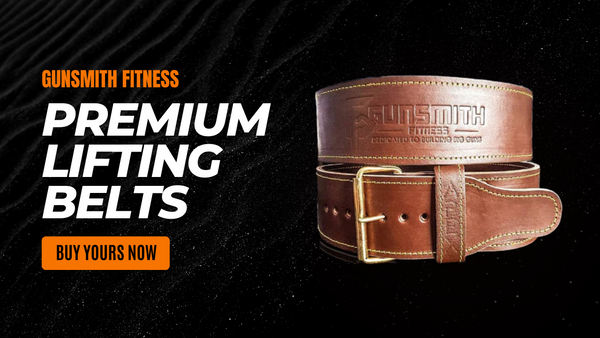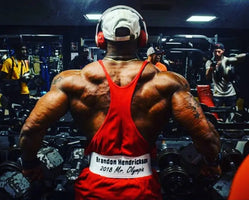
Lever Belts vs Prong Belts, vs Double Prong Belts – What’s The Difference?
Understanding the Different Types of Lifting Belts
If you’re now only getting into weightlifting, then you may be wondering what weightlifting belts are. Perhaps you're thinking of picking up one of those Golds Gym ones? Don't! Please!
You may have even clicked on this article because you’re looking to get one. Basically, weightlifting belts stabilize and reduce stress on the spine, so if you’re a weightlifter and you don’t have a weightlifting belt yet then perhaps it's about time you get one.
Since there are so many different kinds of weightlifting belts out there, we thought it would be a good idea to give you a quick summary of the most popular types of belts. So let’s get on with it!
VELCRO BELTS:
If you expect Velcro belts to offer the least support (compared to other weightlifting belts), you’re not wrong. The advantage though is that you can easily adjust the belt tightness to exactly how you want it, and they’re very easy to put on and off. They’re not ideal for squats of deadlifts, but are great for CrossFit style workouts where you’d be taking off your belt between exercises.
These ones are generally favoured by the ladies, due to their flexibility and simplicity to use.

SINGLE PRONG:
These are the most common type of gym belt, with only one prong fastening the belt. They’re easy to get in and out of compared to double prong belts. People tend to think that double prong belts offer more support but providing the belt is made of quality leather, there really is no difference.
The majority of our powerlifting belts are single prong, check out our classic brown Apex belt here.

DOUBLE PRONG:
They are similar to single prong belts, except of course there are 2 prongs instead of 1. They’re a little bit more difficult to get in and out of, but the common understanding for 2 prongs (which isn't necessarily the case) is that they distribute stress more evenly, and so make it less likely to fail. Also, 2 prongs are more aesthetically pleasing for a lot of people.
Double prong belts are generally more popular for Olympic belts, our Shibusa line is one of our best sellers and comes in a classic old school brown.

LEVER BELTS:
Lever belts are much easier to put on and off than prong belts, however you would need a screwdriver to adjust between sizes – but you’ll only need to do that when you’re losing or gaining weight, right? Otherwise, taking it off after heavy lifting is only a flick of the wrist away. In addition there are 2 types of materials used, there's pewter which has a tendency to crack over time, this should be avoided as it's a poor quality lever. Then you have stainless steel, this will not let you down, ever! All of our levers are stainless steel.
We offer a number of lever belts in both suede and leather, our Apex below is a beauty!

While some people may think weightlifting belts and powerlifting belts are the same, there are a few key differences – powerlifting belts offer the most support, and are the go-to belts for powerlifters because of the maximum surface area to push against. Check out ours here.
If you’re not a powerlifter, then our other weightlifting belts should be more than adequate for your weightlifting needs.
Now that you know about these types of belts, there are just a few other things you’d want to consider when buying one – and that is, width and thickness.
Check out our previous blog entry How to Find the Best Weightlifting Belt: Your Go-To Guide to find out more (and what would be the best belt for you).
You may also want to check out Why Weightlifting Belts are Absolutely Necessary and When to Use them to find out if you need one in the first place!
If you're looking for something a bit more special, check out our custom belts!





